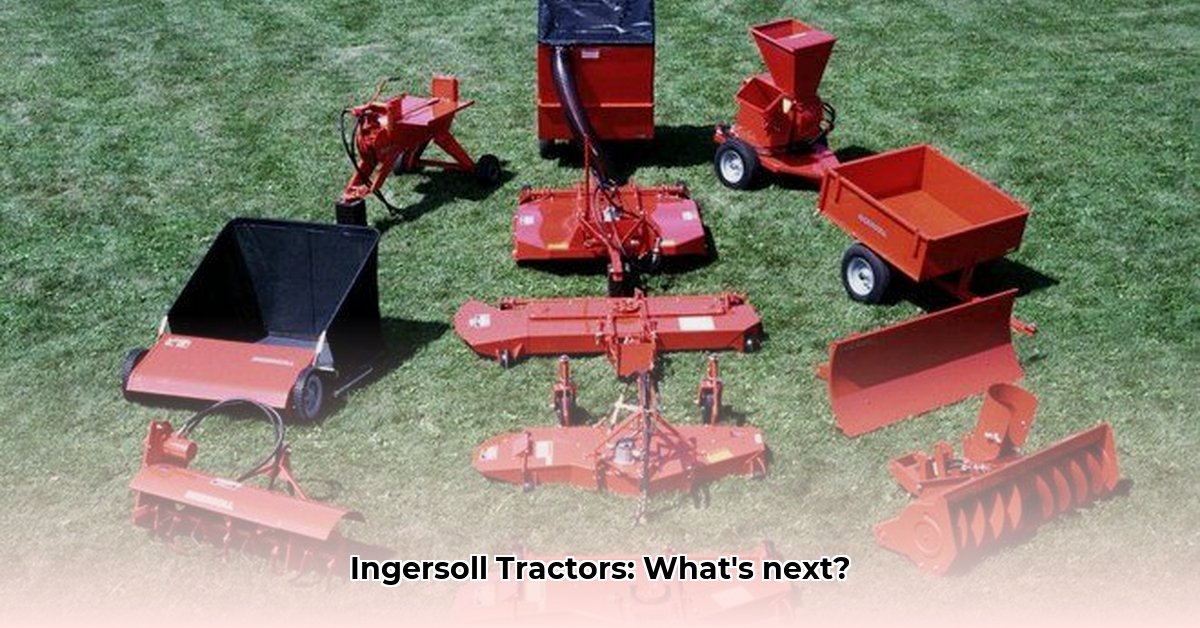
The Ingersoll Tractor Company, once a prominent name in agricultural and garden equipment, finds itself at a critical juncture. This article analyzes its current market position, assesses the risks and opportunities it faces, and explores potential future scenarios. We will examine the conflicting information surrounding the company's production status and explore the implications for various stakeholders.
Ingersoll's Legacy and Current Challenges
For decades, Ingersoll tractors were renowned for their robust build and reliability. Their legacy of quality is undeniable. However, the market landscape has dramatically shifted. The emergence of competitors offering lower-priced alternatives, coupled with a lack of transparent communication regarding Ingersoll's current production capabilities, has created uncertainty surrounding the brand's future. Reports vary from whispers of limited production to concerns about severed manufacturing partnerships, leaving a lingering question: Is Ingersoll still manufacturing tractors?
Will Ingersoll's legacy of quality outweigh the challenges presented by the current market?
Market Position Analysis
Ingersoll's market share has undoubtedly diminished. Competition from companies offering comparable machinery at lower price points has significantly impacted their sales. However, the brand itself retains considerable value and recognition. Its strong reputation for durability could be leveraged for a strategic comeback, but this requires careful consideration and substantial investment.
What specific marketing strategies could effectively revitalize the Ingersoll brand?
Future Prospects: Scenarios and Stakeholder Implications
Several potential scenarios could shape Ingersoll's future:
Acquisition: A larger manufacturer might acquire Ingersoll, leveraging its brand equity and potentially revitalizing its production. This would require a detailed assessment of the brand's remaining value and production capabilities.
Revitalization: A focused effort on a niche market segment, targeting customers prioritizing quality and durability, could prove successful. This strategy would demand significant investment in marketing and potentially new product development.
Market Exit: If no viable solutions are found, Ingersoll may eventually exit the market entirely. This outcome would have significant implications for all stakeholders.
The implications for various stakeholders—investors, owners, competitors, and parts suppliers—are significant and vary depending on the chosen path.
Investors: Due diligence is paramount. Understanding the brand's value, production capacity, and market potential is crucial before any investment decision.
Owners: Maintaining existing machines will become a priority, requiring proactive measures to procure parts and ensure ongoing service.
Competitors: Companies like John Deere and Kubota may see Ingersoll's situation as an opportunity to expand market share.
Parts Suppliers: The demand for Ingersoll parts will determine their strategic approach, necessitating adaptation to potentially fluctuating demand.
What are the most significant risks and opportunities associated with each of these scenarios?
Risk Assessment Matrix for Potential Acquisition
| Risk Factor | Likelihood | Impact | Mitigation Strategies |
|---|---|---|---|
| Brand Image Deterioration | Moderate | High | Strategic rebranding, emphasis on heritage and quality |
| Production Bottlenecks | High | High | Secure new manufacturing partners, modernize facilities |
| Financial Instability | High | Critical | Secure substantial funding, develop realistic budgets |
| Supply Chain Disruptions | Moderate | Moderate | Diversify suppliers, establish robust partnerships |
| Intense Market Competition | High | High | Develop unique product features, target specific niches |
Addressing these risks is critical for a successful revival or acquisition.
Conclusion: Navigating Uncertainty
The future of the Ingersoll Tractor Company remains uncertain due to a lack of official information. However, the brand's established reputation presents a valuable asset. The coming years will determine whether Ingersoll can successfully navigate these challenges, ultimately shaping its place in the agricultural equipment industry. A clear communication strategy from Ingersoll’s leadership is crucial to building confidence and clarifying its future direction. The market awaits their next move.